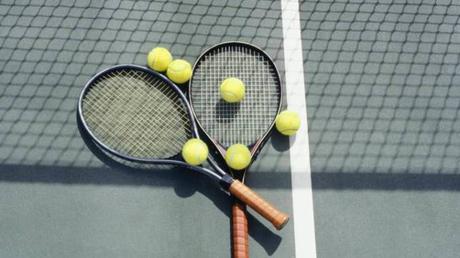
Like gossip through a ladies tennis league, myths have a way of spreading quickly. So it won't surprise you that when it comes to tennis, our rackets have their share of "fake news". Here are four of the most common misconceptions as they apply to tennis rackets...it's time to set the record straight.
: Vibration dampeners prevent tennis elbow.
FACT: Those rubber thing-a-ma-jiggys you fasten to the bottom of your string bed do just what their name suggests - they dampen the vibration of the strings. Many players mistakenly believe that the vibration is the cause of tennis elbow. The truth is, however, that it's usually caused by either bad technique, too small or large of a grip, or shock, which is the force that travels through the frame and into your arm on impact.
The solution to the first two are pretty obvious, but how can you reduce shock without giving up your power? The best way is to play with a heavier racket, which can better withstand the ball's impact. There are also frames designed to reduce shock.
ower string tensions give you more power.
FACT: Stringers have convinced players that the lower tensions create a trampoline effect that propels the ball faster. But studies published by the U.S. Stringers Association show that the velocity at which a ball leaves the string bed doesn't change when the tension is altered. What does change, however, is the length of the shot. Take the topspin groundstroke, for example. A ball hit with looser strings will stay on the string bed a fraction of a second longer, and because of the low-to-high swing, it will leave the racket face from a higher position and at a higher trajectory. This causes the ball to have more "air time", allowing it to travel deeper into the court, giving the illusion that you're hitting it harder.
MYTH: Adding weight to the handle will make the racket more maneuverable.
FACT: Some players believe they can make their frame more maneuverable (easier to swing) by placing lead tape underneath the grip to alter the balance. While it's true the racket will be more head light, it'll still be heavier overall. Additional weight, no matter where it's placed, increases a racket's swing weight (how heavy it feels in motion), making it less maneuverable. By sticking lead tape into the handle, however, you can beef up your stick for more stability and power without significantly reducing its maneuverability.
MYTH: Lighter rackets are more powerful.
FACT: Light doesn't mean might, for the simple reason that there's less mass on impact. From the ball's perspective, getting hit with a light racket rather than a heavy one is like a quarterback being sacked by a 170-pound kicker instead of a 300-pound defensive lineman (my homage to football season, lol!) Some might argue that a lighter-weight frame allows you to generate more racket-head speed, which gives the ball more zip. But most players don't swing faster with a lighter frame. And if they compensate for the lack of heft by taking too fast a rip, they could strain their arm. The only way a light-weight racket can deliver power is if it has features such as an oversized head, a stiff frame, or longer length.

